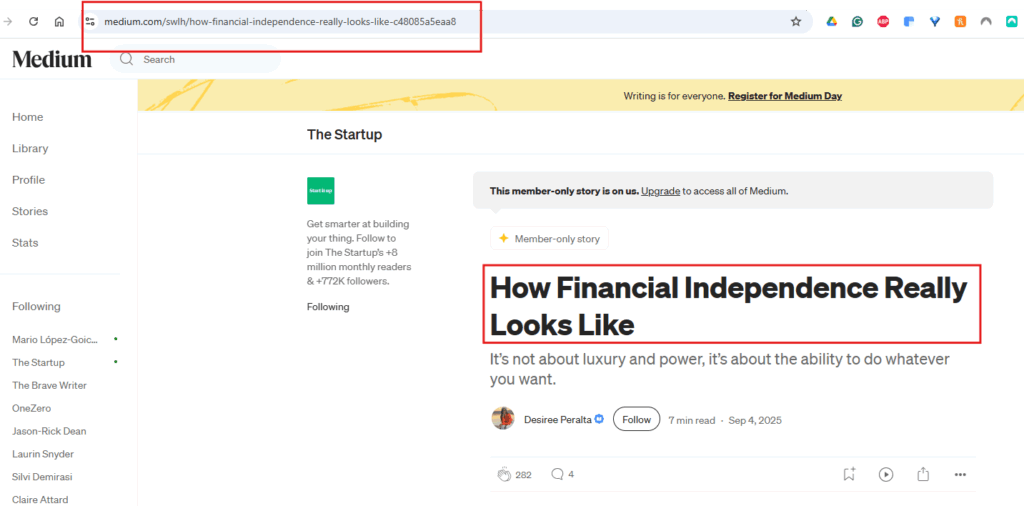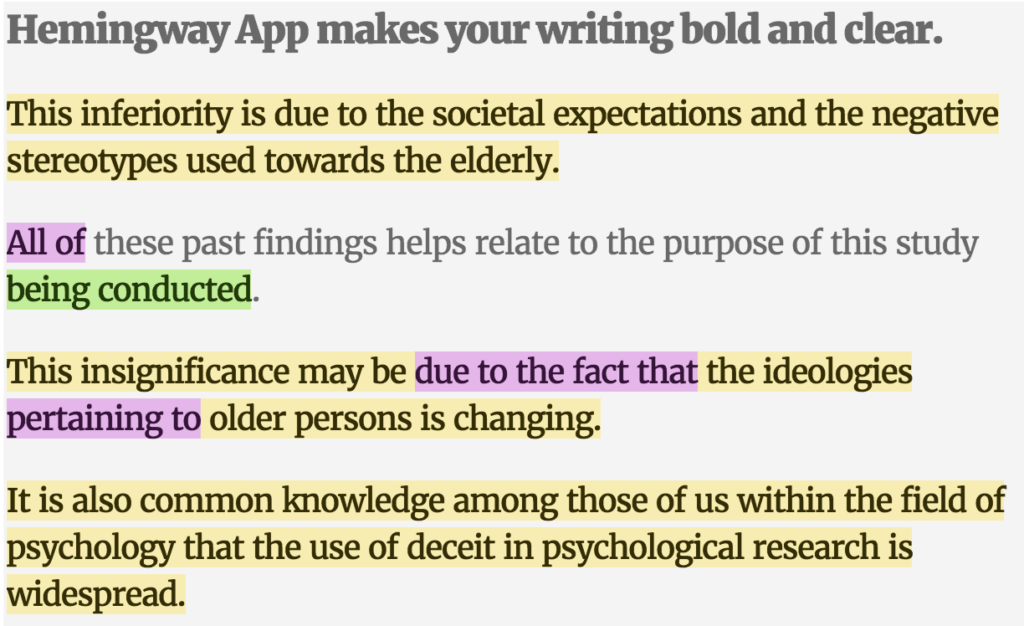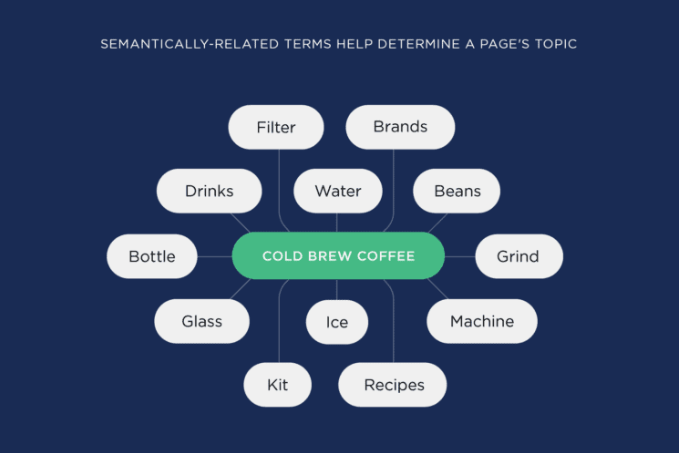
If you’ve ever posted on Medium and wondered why some stories skyrocket in search while others barely get noticed, you’re not alone. Many writers assume Medium SEO is too complicated or that it doesn’t work at all.
The truth is, Medium can be a powerful platform for reaching new audiences. But only if you understand how to optimize your content effectively.
In this guide, we’ll clear up the most common myths and show you exactly how to take advantage of Medium’s strong domain authority. You’ll learn how to research keywords, structure your articles, and use built-in features like canonical tags without hurting your rankings.
Let’s dive in.
Here we bust myths that many writers believe about optimizing content on Medium. Knowing what’s false helps you focus on what actually works.
Many assume that Medium hurts search engine optimization because it’s not your site. But that’s not true.
Medium has a high domain authority. And, because of this, Google trusts its content. This trust gives your post a head start in the rankings compared to a brand-new self-hosted blogs with no backlinks.

Also, when you publish well-optimized Medium articles, they often appear in the Google SERP for relevant search queries. This is especially true when your content matches user intent and uses the right keywords.
Another common myth is that refreshing old content on Medium will automatically trigger a duplicate content penalty. It’s true that duplicate content is a part of technical SEO issues.
However, you can easily solve this with a canonical link. This informs search engines which version of your content you want to treat as the original.
For example, you publish a 2,000-word guide on your own blog. You also import it to Medium and set the canonical tag back to your site. Your Medium story generates referral traffic. But Google also recognizes your self-hosted blog as the main source.

A self-hosted website gives you control. However, it’s not the only path to gaining a high ranking. Medium can work alongside your own site as part of your content strategy.
Keep your guides, product pages, and services on your website. Use Medium for extra reach and content repurposing. So if you’ve published an industry report on your blog, you can post a shorter version for Medium that links back to your original story.
This way, you still maintain content ownership, even with an active presence on Medium.
Best practices are what turn theory into results. These are the practical, up-to-date steps that will help you improve Medium SEO in 2025. To attract more readers, boost search visibility, and achieve long-term results, focus on these key areas.
The first step when blogging on Medium is to identify the search queries that your audience types into search engines. Keyword research tools can give you an idea of what’s trending right now.

Targeting long-tail keywords should help. These are longer phrases but are more specific and have lower competition. They also target qualified traffic, as they match exactly what users are looking for. This means that it’ll be easier for your content to rank and satisfy user intent.

In addition, consider giving keyword clustering a try. We use this term to group search queries that target the same intent or purpose. This approach can be helpful when you’re planning a series of blog posts or Medium articles. It strengthens your internal linking strategy, as posts can support each other.

If “remote work tools” is your head term, you could build a cluster around searches like “free remote work tools” or “remote work tools for developers”. Fold in synonyms like “remote work software” and align subtopics to intent (comparisons, pricing, vs pages) to scoop up more qualified searches without stuffing. Your content team can use this tactic to write multiple Medium SEO stories that interconnect. This shows search engines that you cover the topic in depth. You also provide readers a natural path to explore more of your content.
There are various methods of keyword clustering. But for a quick keyword idea, you can find similar, relevant keywords in Google suggestions like so:

Screenshot provided by the author
After you choose your search terms, you have to optimize what readers and search engines see on the page.
For example, your H1 title should contain the primary keyword. It should make it clear what the story is about. You should also craft an actionable and descriptive meta title and description that include the head term, as these two appear in search engine results pages.
Pay attention to the URL slug and structure. The URL should be clear and contain keywords already mentioned in the Medium blog post.
Here’s an example of metadata for a Medium SEO article targeting the keyword “financial independence”:

Screenshot provided by the author
And here, both the URL and H1 mention “financial independence”.

Don’t stop there, though. Add a descriptive Alt text for each image. Try to include the keyword where it fits best. This is a minor detail, but it enhances search engine indexing and image search visibility. You can find this feature in Medium’s ‘Edit Story’ page.

It’s no use targeting the right keywords if your blog posts don’t provide value. Create content that is helpful and backed by recent data, and it will perform better in search rankings than stories written solely to target specific queries.
To optimize your blog posts for Medium SEO, you need to go deeper. Aim for long-form content. Provide depth, clarity, and solutions.
Formatting also plays a big role in readability. A 2024 study from the ScienceAdvances Journal with over 30,000 experiments in The Washington Post and Upworthy showed that readers prefer simpler-written headlines. They also engage more when the language is simple and the text doesn’t contain complex terms.
This indicates that for Medium audiences, content should be easy to read, especially for busy readers who prefer to skim through it. Here’s what to do:
Readability tools can help you achieve the writing grade you want to aim for.

When we talk about SEO, we’re not only referring to algorithms. But there are other factors that matter, like user engagement and building trust with readers, which can increase your reach in the long run.
Social media does the magic too. And that’s where your audience could be active too. Join Facebook groups or community forums to get initial traction and bring new readers into your Medium article.
Your content should also help you build assets that you own. That means starting an email list and sending regular updates. With SEO newsletters, you keep readers coming back, even if Medium changes its feed or algorithm.
To go deeper, track your growth with data. Add UTM codes to links you share. Then analyze their performance with analytics tools, such as Google Analytics. You’ll know if traffic is coming from organic search, referrals, or social channels. You can then adjust your efforts accordingly.
Here’s an example of a URL ending with a UTM code. It shows that the visitor came from Facebook.

The first rule of SEO is know your audience. Medium’s audience in 2025 is over 64% male, reads via desktop computers, and is between the ages of 25 and 34 (Source: Medium). There are plenty of ways to reach your target audience (even if it’s not Medium’s largest).
Medium itself offers tools and features that you shouldn’t ignore. Its import tool makes it straightforward to republish existing work while keeping canonical tags intact. That saves time and protects your SEO.

If you qualify, join the partner program. Beyond potential revenue, stories with high engagement often gain more visibility across the platform.

Don’t forget to keep older work accessible to new readers. Updating and resharing these Medium posts can breathe new life into them. And be consistent in your publishing schedule. You might decide to post how-to guides on Mondays and comparison articles on Wednesdays. This ensures you build thought leadership and maintain a high authority score.
Once you’ve applied the basics, these advanced SEO techniques can help you stay ahead, especially given how Google’s algorithms evolve.
For search engines, context is as important as keywords. And here, we introduce the concept of latent semantic indexing (LSI) and semantic SEO techniques. LSI keywords aren’t synonyms. They’re queries contextually related to the target keywords.
Let’s say you’re writing a Medium SEO article around the keyword “hiking gear”. Then, “hiking backpacks” and “hiking boots” would be the semantically-related keywords. RankMath says that you don’t necessarily have to target LSI keywords in your blog posts. However, you’ll likely incorporate them naturally as you write.
However, with related terms, Google can see that your content provides depth and thoroughly covers the subject.

To achieve a high search ranking, you need both internal and external support.
Acquire external backlinks from guest posts or mentions on reputable websites. These carry valuable link juice that boosts your visibility. At the same time, internal links connect your readers to other Medium articles you’ve written.
Make sure to follow white hat link building techniques. For example, you should only earn backlinks from reputable websites, which helps raise your authority score over time. Work with other writers, cite credible studies, or get industry experts to link to your Medium stories.
Even a single guest post on a well-ranked site that links back to your article can elevate both visibility and trust.
When you track progress, you’ll know which areas need fine-tuning. SEO tools can:
And, content analytics tools let you track other metrics, like bounce rate and reading time. Overall, you’ll have a clear picture of how users are engaging with your stories on Medoum.
Let’s say your article once attracted traffic for “best blogging tools,” but searches drop. What you have to do is refresh the piece with terms like “best content tools in 2025”. Update internal links so that your story links to newer posts. This way, you’ll keep your article aligned with search behavior.
1. Does Medium SEO really work?
Yes. Medium’s domain authority is high, so optimized stories often rank in search engines. If you use the right keywords and formatting, you can gain consistent organic traffic.
2. Will publishing on Medium hurt my self-hosted website?
Not if you set a canonical link when republishing. This is like telling search engines that your site is the original source. And just like that, you won’t have any duplicate content issues.
3. Can Medium SEO help me build an audience?
Absolutely. Combine SEO with social media promotion, an email list, and consistent posting. This builds trust, enhances visibility, and encourages readers to return over time.
Optimizing your content for Medium SEO isn’t complicated. You have to focus on strategies that can improve visibility and build a loyal audience, like selecting long-tail keywords and providing a descriptive Alt text for images.
Tracking results with analytics should also be part of the game. These help you adapt as search trends evolve. Want to dive deeper? Explore more of our blog posts for practical insights and strategies to boost your SEO efforts and grow your presence on Medium and beyond.